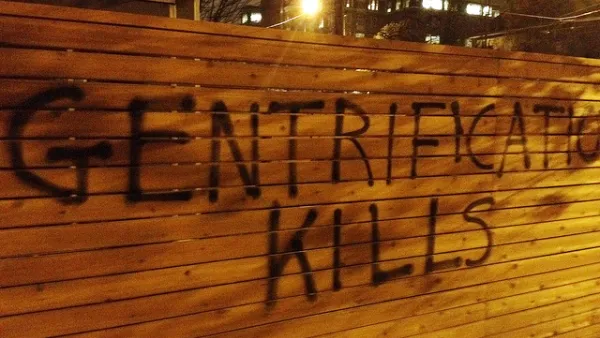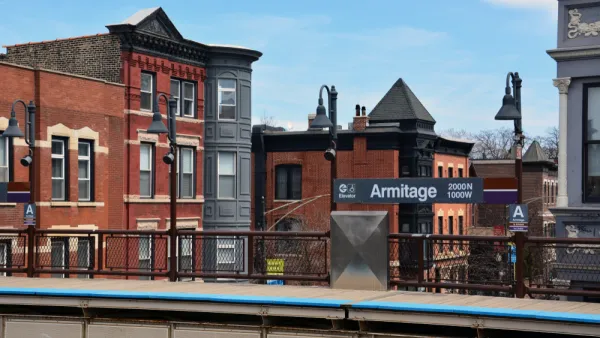A new book by Samuel Stein links planning to the causes of a global finance industry that values worldwide real estate at $217 trillion, or 60 percent of the world's assets.

An article by Oscar Perry Abello inspired by the release of a new book, Capital City: Gentrification and the Real Estate State, by Samuel Stein, provides the inspiration for a reality check for planners about their role in the racism of past and present land use regimes in the United States and a call to action to overthrow the status quo. Decades after the displacement of urban renewal and urban highway construction, the situation is different:
Stein’s book makes the case that planners today find themselves at the unchecked mercy of global finance, for whom real estate is now valued at some $217 trillion. That’s 60 percent of global assets, and three-quarters of those assets are in housing. He argues that no effective counterweight exists right now to the voices and interests of finance — as there have been, at times, in the past, and there could be again. Without an effective counterweight, nothing will push back against the constant pressure to drive up real estate values as the end goal or as an essential means to other ends. It reduces planners to mere wealth managers, wittingly or unwittingly.
The suggestion of the article and the book, according to Abello, are that community organizers can provide that effective counterweight. "The real challenge of today, as Stein points out, is finding the political means to shift the frame of what’s considered possible."
Next City has also published a long passage from Stein's book, published on March 5, 2019 by Verso Books.
FULL STORY: To Save Urban Planners, Cities Need Community Organizers

National Parks Layoffs Will Cause Communities to Lose Billions
Thousands of essential park workers were laid off this week, just before the busy spring break season.

Retro-silient?: America’s First “Eco-burb,” The Woodlands Turns 50
A master-planned community north of Houston offers lessons on green infrastructure and resilient design, but falls short of its founder’s lofty affordability and walkability goals.

Delivering for America Plan Will Downgrade Mail Service in at Least 49.5 Percent of Zip Codes
Republican and Democrat lawmakers criticize the plan for its disproportionate negative impact on rural communities.

Test News Post 1
This is a summary

Test News Headline 46
Test for the image on the front page.

Balancing Bombs and Butterflies: How the National Guard Protects a Rare Species
The National Guard at Fort Indiantown Gap uses GIS technology and land management strategies to balance military training with conservation efforts, ensuring the survival of the rare eastern regal fritillary butterfly.
Urban Design for Planners 1: Software Tools
This six-course series explores essential urban design concepts using open source software and equips planners with the tools they need to participate fully in the urban design process.
Planning for Universal Design
Learn the tools for implementing Universal Design in planning regulations.
EMC Planning Group, Inc.
Planetizen
Planetizen
Mpact (formerly Rail~Volution)
Great Falls Development Authority, Inc.
HUDs Office of Policy Development and Research
NYU Wagner Graduate School of Public Service





























